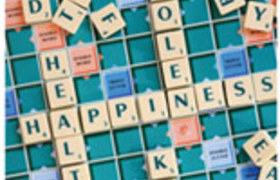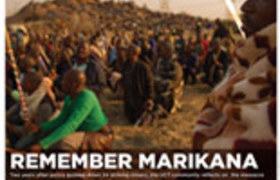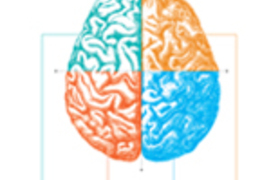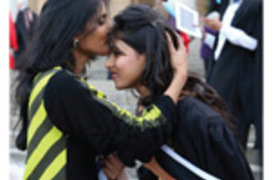A Good Death
01 December 2014 | Story Helen Swingler. Photo Michael Hammond.
Cape Town has run out of space to bury its dead; and new, environmentally and culturally acceptable options are urgently needed, both for burial and cremation, as well as for memorialisation, says PhD candidate and change agent Lucienne Kelfkens.
Kelfkens has just signed up to have her body donated to UCT's medical faculty when she dies.
It took some thought and persuasion (it took her family by surprise) but she's well aware of the growing dilemma about managing the city's dead. In Cape Town, over 1 600 people die every month, and 60% of them are buried.
It's a burden the city can no longer carry, says Kelfkens, who is attached to the Bertha Centre for Social Innovation and Entrepreneurship at the Graduate School of Business, and is CEO of Imvusa Change/Partners for Impact.
With growing urbanisation, land is valuable; too valuable to house vast graveyards like Maitland cemetery, which is the size of 140 soccer fields.
Increasingly, cemeteries are being vandalised and have become lonely places, some unkempt and under water. And exorbitant funeral and funeral insurance costs are leaving the city's poorest deep in debt.
Environmentally, the dead also leave a large footprint.
Crematoria release pollutants such as formaldehyde, dioxins, and mercury from the amalgams used to fill teeth.
Caskets use metal accessories and linings, and glue and varnish that can pollute groundwater or create noxious crematoria emissions. In the case of burial, the depth of burial creates anaerobic conditions, and corpses decay to methane.
The sprawling Maitland cemetery and its barely-used mausoleum are not at all like the nature park Kelfkens envisages, where bodies would be shallow-buried in shrouds on simple wooden pallets (preferably alien wood), much as Muslims do, and located by loved ones via GPS; bodies decomposing naturally so that the ground can be used again.
Options such as 'green' burials are being explored in other parts of the world; and Kelfkens has started conversations she hopes will drive innovation in death care in South Africa – where there's too little conversation about it, in a society largely estranged from the idea of death.
To facilitate a shift in mindset on this taboo subject, Kelfkens has partnered with the South African Faith Communities Environment Institute to launch a first round of interfaith workshops that will explore change. She is also in talks with the funeral insurance industry to come up with alternatives.
Part of her campaign is the recently launched documentary Dust to Dust: Creating space for change, which explores various opinions, cultural beliefs, and options.
As a change agent, Kelfkens believes system innovation can re-shape the demand for existing funeral options, using design-thinking methods that encourage what she calls "innovation for inclusiveness".
To illustrate this, Kelfkens is part of a group co-designing an extension of the city's public cemeteries, which includes the option of memorial parks. "We hope to understand the narratives of various cultures and are planning an interactive expo in the city to share these options."
Kelfkens has spread her net wider: she's in talks with the city of Bristol to have the documentary included in a death exhibition, and with UCT and Dutch academics on the possibility of semi-cremation, which allows bones to be returned to relatives.
She is also collaborating with Yarden, a Dutch funeral/cremation company that's developing an interfaith 'farewell centre' in multicultural Amsterdam.
The company is exploring other new ideas, partnering with companies to create a commercial cryogenics-based process that freeze-dries bodies and converts these into a sterile powder for use as compost. It's an alternative for those who don't want to be buried and don't fancy the idea of cremation.
These remains can be buried, sustainably returning to the soil within a year, or be subjected to an 'accelerated composting' option. The remains are given to the family in an urn for scattering or growing purposes.
The world-first Design for Death competition in 2013, an initiative between the Lien and ACM Foundations, spotlighted the importance of death care.
The website lists some intriguing ideas: a grandmother's familiar scent captured for eternity; a micro-airship that transforms bodies into gentle rain; and mushroom suits that aid the corpse's natural biodegrading.
Winners in the Eco/Green Deathcare category, France's Pierre Rivière and Enzo Pascual, married design with emotion, energy and the environment. Their entry, 'Emergence', is a cemetery that's a reservoir of life, created from biological concrete (which supports the growth of flora on its surface) to absorb carbon dioxide and provide electricity. In the reservoir, the dead lie in biodegradable urns or caskets that are re-absorbed by the earth.
While green burials come with their own environmental watch points, such as potential groundwater contamination, there is little doubt in Kelfkens' mind that new options also need to address our discomfort with death.
As Robert Feagan writes in 'Death to Life: Towards my green burial' in Ethics, Place & Environment: A Journal of Philosophy & Geography:
"In this sense, rather than being seen as contrary or contentious, green burial may actually enable us to dispel some of the growing angst, uncertainty, and insensitivity often underlying prevailing burial practices, while contributing to an emerging environmental consciousness."
But as Kelfkens adds, it's going to need a major shift in thinking and practice. "For inclusive innovation to work, one needs the collaboration of the academic world, government, business, NGOs and the community."The action research is designed to allow for participating actors to tap into the innovative journey while changing their business models. Ultimately, it's the consumers who have to be inspired to reconsider their decisions regarding death care."
 This work is licensed under a Creative Commons Attribution-NoDerivatives 4.0 International License.
This work is licensed under a Creative Commons Attribution-NoDerivatives 4.0 International License.
Please view the republishing articles page for more information.
News
Feature
Front page
Focus
Photo Essay
Faculty Focus - Science
Previous Editions










